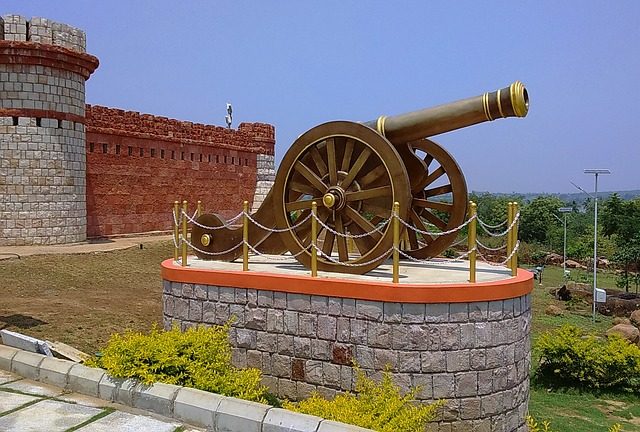With Goa having a long list of conquerors over the centuries, it has a number of forts which were used for different reasons. Forts were mainly utilised as a strategic part of defense for the rulers. Here are some of the forts which played an important part in Goa’s history.
Fort Aguada
Fort Aguada is the largest fort in Goa. It was built in 1609-1612 to control the entry of ships into the Mandovi River and to protect Old Goa from enemy attacks. The fresh water springs within the fort provided drinking water to the voyagers, thus the name ‘Aguada’ was given to it, as ‘agua’ means water in Portuguese. The heart of the fort was protected by about 200 canons and one deep dry moat, which still has to be crossed to get inside. This is proudly the only fort which wasn’t conquered by invaders in the 450 year rule of the Portuguese. The gigantic bell from the fallen St. Augustine church was in the lighthouse of the fort until it was moved to another church.
Cabo de Rama Fort
Located in the Canacona taluka, Cabo de Rama gets its name from Rama, the hero of the Hindu Ramayana, who along with his wife Sita lived in that area during his exile. The fort was held by various rulers until it was taken over by the Portuguese in 1763 from the King of Sonda. The fort was rebuilt by the Portuguese subsequently. After the rebuilding was complete, the fort saw no action apart from being briefly occupied by British troops. The western part of the fort provides a breathtaking view of the sea. There is little to see of the old structure beyond the front wall with its dry moat and main gate, and the small church which stands just inside the walls.
Reis Magos Fort
Reis Magos Fort was built by Adil Shah in 1490’s to protect the narrowest point of the mouth of the Mandovi. From its origin as a defense fortress, to being used as a jail and then a hospital, the fort has served the state since 1493. It was abandoned in 1993 and started showing signs of neglect and deterioration. The Restoration of the historically important Reis Magos Fort was initiated and paid for by The Helen Hamlyn Trust. The fort was opened to the public on the 5th of June 2012.
Chapora Fort
Located 10km from Mapusa, the red-laterite bastion, was built by the Portuguese in 1617 on the site of an earlier Muslim structure. Intended as a border watch-post, it fell to various Hindu raiders during the 17th century, before finally being deserted by the Portuguese in 1892. The fort lies in ruins, although you can still see the heads of two tunnels that previously provided supply routes for defenders, as well as Muslin tombstones, believed to be relics of pre-colonial days. The best part of the fort is the spectacular view of the nearby beaches.
Terekhol Fort
The fort lies on the northern tip of Goa on the Terekhol River. The fort was built in the 17th century by Maharaja Khem Sawant Bhonsle, the King of Sawantwadi. It was later rebuilt by the Portuguese in 1764 after viceroy Dom Pedro Miguel de Almeida captured it. In 1825, Dr. Bernado Peres da Silva used the fort as a base for an armed Rebellion against the Portuguese. The remains of the fort have now been converted into a hotel.
Khorjuem Fort (Corjuem)
The Corjuem fort is situated about 4 kilometers north of Pomburba alongside the Mapusa river near the village of Aldona. The fort was built in 1705 by the Portuguese. In the early 1800s, the fort was used as a Military School and had in its defenses a battery of four guns. The fortress defended the town of Corjuem and also had a chapel under parochial church of Aldona. According to sources this fort has an interesting story to tell. A woman named Ursula e Lancastre, an ambitious Portuguese woman determined to succeed in a man’s world; dressed up like a man and travelled the world. She eventually landed up here as a soldier. Her secret was revealed when she was captured and stripped.
Cabo Fort
Located about 9 kilometers from Panjim lies Cabo fort on the peninsula land in Dona Paula. The fort was erected in 1540 by the Portuguese to guard the entrance to the Goan harbor. The fort’s canons were never used in anger so the buildings were used as temporary accommodation for the archbishop from the 1650’s. The British took over for a brief stay from 1798-1813. Small ruins of the British cemetery can still be seen off the fort. The Cabo Fort later became the Cabo Palace and is now the Raj Bhavan, the official residence of the Governor of Goa.
Know of any forts not mentioned in the list? Do write to us in the comments below.


